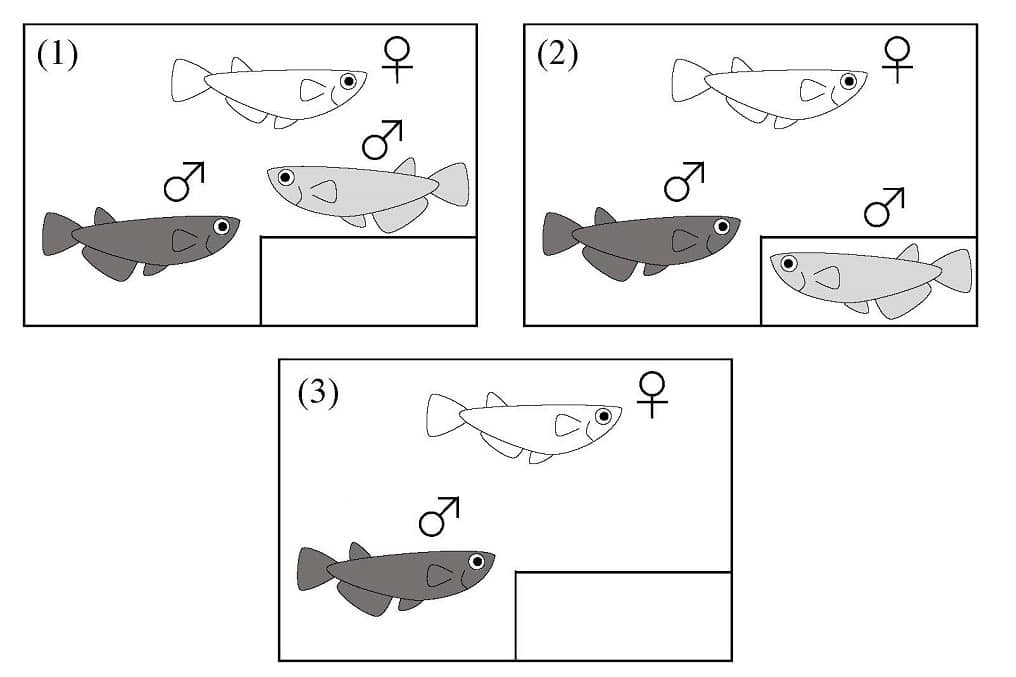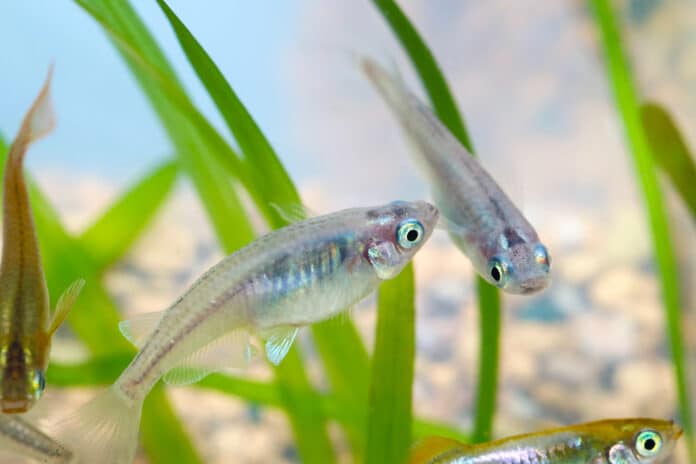Males that mate several times must manage their sperm allocation carefully to enhance fitness, as sperm production is physiologically expensive. Few studies have examined whether males modify the amount of sperm produced in response to their premating experience and cues from rival males. However, the sperm allocation theory has been extensively tested in internally fertilizing animals.
A new study investigated sperm allocation strategies in an externally fertilizing fish, the medaka, Oryzias latipes, in controlled conditions. The study conducted by specially Appointed Assistant Professor Yuki Kondo, Professor Satoshi Awata, and Specially Appointed Professor Masanori Kohda of the Graduate School of Science, Osaka Metropolitan University, and Professor Yasunori Koya of the Faculty and Graduate School of Education, Gifu University, has elucidated how the sperm volume of male medaka fish adjusts in response to the presence and behavior of rival males.
Scientists used three treatments: direct interaction with a rival (two males were allowed to interact directly with each other), visual cue only (presenting a male in a separate compartment), and no rivals (control).
Two patterns of the competing male’s involvement in spawning were seen in condition 1. The first pattern had the rival male joining the spawning couple, and all three of them discharged eggs and sperm at the same time. After the female had finished spawning, the competing male launched his sperm toward the female on whose abdomen the eggs were hanging. This was the second pattern. Two more patterns were seen in the first instance of simultaneous sperm release when the rival male hampered the female’s spawning before the discharge of eggs and sperm.

The first was a successful disruption by the rival male that separated the paired male and female. The second was an unsuccessful disruption in which the rival male did not separate the pair.
Two patterns of the competing male’s involvement in spawning were seen in condition 1. The first pattern had the rival male joining the spawning couple, and all three of them discharged eggs and sperm at the same time. After the female had finished spawning, the competing male launched his sperm toward the female on whose abdomen the eggs were hanging. This was the second pattern. Two more patterns were seen in the first instance of simultaneous sperm release when the rival male hampered the female’s spawning before the discharge of eggs and sperm.
The first was a successful disruption by the rival male that separated the paired male and female. The second was an unsuccessful disruption in which the rival male did not separate the pair.
The focal male did not change his sperm volume when the rival male was a visual cue or even when the men were in direct contact with one another, according to studies of the sperm volumes of the males in each pattern. Only when both sperm were released simultaneously following the rival male’s successful disruption did it change.
The results of this study demonstrate that the medaka is more adaptable than anticipated in how much sperm volume is allocated depending on the situation. Previously, male fish, including the medaka, were considered to visually identify the presence of rivals and allocate their sperm volume.
Future research should look into whether guys vary how much sperm they discharge based on the circumstances. It is anticipated that the physiological, genetic, and cognitive mechanisms behind sperm allocation during fertilization techniques can be clarified since the medaka provides a suitable model for researching sperm allocation during external fertilization.
Journal Reference:
- Yuki Kondo, Masanori Kohda, Yasunori Koya et al. Sperm allocation in relation to male–male aggression and courtship in an externally fertilizing fish, the medaka. Animal Behaviour. DOI: 10.1016/j.anbehav.2023.05.011
